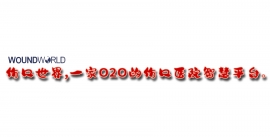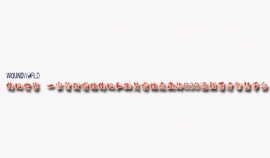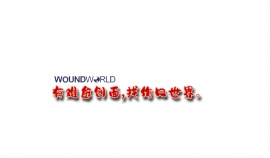文献精选
Ali Alrida Rahal1, Sinan Alboudi1, Israa Ali Haidar2 , Anwar Alhassanieh1
1 Department of Plastic Surgery, Faculty of Medicine, Damascus University, Damascus, Syrian Arab Republic
2 Obstetrics and Gynecology Department, Faculty of Medicine, Damascus University, Damascus, Syrian Arab Republic
Email:该Email地址已收到反垃圾邮件插件保护。要显示它您需要在浏览器中启用JavaScript。,该Email地址已收到反垃圾邮件插件保护。要显示它您需要在浏览器中启用JavaScript。,该Email地址已收到反垃圾邮件插件保护。要显示它您需要在浏览器中启用JavaScript。,Dranwar_该Email地址已收到反垃圾邮件插件保护。要显示它您需要在浏览器中启用JavaScript。.
How to cite this paper: Rahal, A.A., Alboudi, S., Haidar, I.A. and Alhassanieh, A. (2020) Acute Burns in Pregnancy. Open Journal of Obstetrics and Gynecology, 10, 1702-1707. https://doi.org/10.4236/ojog.2020.10120154
Received: November 19, 2020
Accepted: December 18, 2020
Published: December 21, 2020
Copyright © 2020 by author(s) and Scientific Research Publishing Inc. This work is licensed under the Creative Commons Attribution International License (CC BY 4.0). http://creativecommons.org/licenses/by/4.0/
Abstract
Background: Acute burns injury in pregnant women is relatively rare especially in developed countries. There is a paucity of published data on the specific problems of burns in pregnancy, despite the high mortality for both the mother and the fetus. Aim: In this paper we will discuss all cases of acute burns in pregnant women admitted to the Burns Department in Al-Mouassat University Hospital in Damascus during the period between October 2017 and October 2019. Materials and Methods: A retrospective study of records over 2 years was conducted. The study included all pregnant burn injury women who were managed and followed up at the Burns Department in Al-Mouassat University Hospital. Patients were classified according to gestational age , burn characteristics, and maternal and fetal outcome. Results: Eleven patients were included , with mean age of 22.5 years (range 16 - 37 years). Of the 11 pregnant patients, 4 (36%) were in the first trimester, 3 in the second trimester (27%), and 4 in the third trimester (36%). The mean percentage of total body surface area (TBSA) burned was 40.9% (range: 17% -76%). Maternal death occurred in 2 of the cases (18%) and fetal death in 7 (63.6%). Conclusion: Maternal mortality is correlated to the percentage of the total burned area and inhalation injury. Burns in pregnant women have a profound effect on the fetal wellbeing, with a high rate of mortality especially in the first trimester.
Keywords: Acute Burns, Pregnancy, Mortality
Fatoumata Binta Balde1*, Zineb Benmassaoud1, Thierry Mukenge1, Majdouline Zemmari1, Hicham Abdellaoui1,2, Tazi Mohammed Charki1,2, Karima Atarraf1,2, My Abderrahmane Afifi1,2
1 Department of Pediatric Surgery, Hassan II University Hospital, Fez, Morocco
2 Faulty of Medecine and Pharmacy, Sidi Mohamed Ben Abdallah University, Faz, Morocco
Email:★该Email地址已收到反垃圾邮件插件保护。要显示它您需要在浏览器中启用JavaScript。
How to cite this paper: Balde, F.B., Benmassaoud, Z., Mukenge, T., Zemmari, M.,Abdellaoui, H., Charki, T.M., Atarraf, K. and Afifi, M.A. (2021) Place of Total Self-Skin Transplant in the Management of
Burns in Children: Results and Predictive Factors. Open Journal of Pediatrics, 11, 676-683.
https://doi.org/10.4236/ojped.2021.114063
Received: October 10, 2021
Accepted: December 5, 2021
Published: December 8, 2021
Copyright © 2021 by author(s) and Scientific Research Publishing Inc.
This work is licensed under the Creative Commons Attribution International
Abstract
Introduction: Skin transplant is essential in the management of skin substance losses, especially in deep burns. Our work aims to present, through a series of cases, the results of the skin self-transplant carried out to supplement the treatment of skin burns.
Materials and Methods: A one-year prospective study of the total self-skin transplant performed in the management of burns in children was included. After clinic and biologic considerations, a total self-skin transplant was performed.
Results: Forty-five burns were hospitalized, of which six patients received a total self-skin transplant. The average age was 7.43 years with male predominance. The burns were deep thermal burns, preferentially located on the trunk and upper limbs covering over 10% - 25% of the body surface of which 3% - 13% was transplanted. Transplant held in all patients. The surfaces left in spontaneous healing took at least 6 months to heal with some complications. Discussion: We performed a total self-skin transplant beyond technical reasons, for the best aesthetic and functional result it offers. The transplant significantly reduced the healing time with better aesthetic and functional results. The burned surfaces left to direct healing took an average of 6 months to heal and there were associated complications such as formation of keloid scars, hypertrophic plaques and skin retractions leading to cosmetic deformities. The final results appear to be independent of the time required to complete the transplant, and it will be necessary to ensure that there is no local and systemic infection and anaemia.
Conclusion: Total self-skin grafting still has its place in the initial management of burns in children. It offers good aesthetic and functional results. License (CC BY 4.0).
Keywords
Skin Transplant, Burn, Child
http://creativecommons.org/licenses/by/4.0/
龙奇军1 ,杨梅春2* ,杨 娟3 ,黄丽珍1 ,张钰婷1
1 右江民族医学院,广西 百色
2 右江民族医学院附属医院,广西 百色
3 右江民族医学院重金属与氟砷毒物研究实验室,广西 百色
收稿日期:2021年3月19日;录用日期:2021年4月15日;发布日期:2021年4月22日
摘 要
目的:探讨负压封闭引流(VSD)联合间断快速冲洗技术在下肢开放性骨折合并软组织缺损的应用研究。
方法:选取我院创伤骨科2020年1月~2020年10月收治的50例下肢开放性骨折合并软组织缺损行VSD负压引流术后的患者,分为实验组25例用生理盐水快速间断冲洗创面及对照组25例用生理盐水持续冲洗创面,分别对两组护理效果进行比较。通过记录每例发生引流管堵塞的次数、患者疼痛指数评分、使用VSD平均治疗时间、创面愈合效果及疗效显现时间、出院患者满意度进行对比。结果:VSD负压引流术后采用间断冲洗与持续冲洗防止引流管管道堵塞的效果无差别(P > 0.05),实验组的疼痛程度低于对照组(P <0.05),实验组使用VSD平均治疗时间短于对照组,实验组创面愈合效果优于对照组(P < 0.05),实验组疗效显现时间短于对照组(P < 0.05),实验组的满意度高于对照组(P < 0.05)。结论:负压封闭引流(VSD)联合间断快速冲洗技术能显著促进下肢开放性骨折合并软组织缺损创面的愈合,降低患者的疼痛程度,缩短治疗时间,提高患者满意度,值得推广应用。
关键词:负压封闭引流,VSD,间断快速冲洗,下肢开放性骨折,软组织缺损
文章引用: 龙奇军, 杨梅春, 杨娟, 黄丽珍, 张钰婷. 负压封闭引流(VSD)联合间断快速冲洗技术在下肢开放性骨折合并软组织缺损中的应用研究[J]. 临床医学进展, 2021, 11(4): 1762-1767. DOI: 10.12677/acm.2021.114253
Study on the Application of Negative Pressure Sealed Drainage (VSD) Combined with Intermittent Rapid Irrigation in the Treatment of Open Fractures of Lower Limbs Complicated with Soft Tissue Defects
Qijun Long1, Meichun Yang2*, Juan Yang3, Lizhen Huang1, Yuting Zhang1
1 Youjiang Medical University for Nationalities, Baise Guangxi
2 Affiliated Hospital of Youjiang Medical University for Nationalities, Baise Guangxi
3 Heavy Metal and Arsenic Fluoride Research Laboratory, Youjiang Medical College for Nationalities, Baise Guangxi
Received: Mar. 19th, 2021; accepted: Apr. 15th, 2021; published: Apr. 22nd, 2021
Abstract
Objective: To investigate the application of negative pressure closed drainage (VSD) combined with intermittent rapid irrigation in the treatment of open fractures of lower limbs complicated with soft tissue defects. Methods: A total of 50 patients with open fractures of lower extremity combined with soft tissue defects admitted to the Department of Trauma and Orthopedics of our hospital from January 2020 to October 2020 were selected after VSD negative pressure drainage. The patients were divided into the experimental group (n = 25) and the control group (n = 25), who were rapidly and discontinuously irrigated with normal saline. The nursing effects of the two groups were compared respectively. The frequency of blockage of drainage tube, pain index score of patients, average treatment time with VSD, wound healing effect and curative effect appearance time, and satisfaction of discharged patients were recorded. Results: After VSD negative pressure drainage by intermittent flush with continuous irrigation to prevent drainage pipe blockage effect difference (P > 0.05), the experimental group level of pain is lower than the control group (P <0.05), the experimental group used the VSD treatment time is shorter than the control group on average, the experimental group wound healing effect is better than that of control group (P <0.05), the experimental group curative effect appears shorter than the control group (P < 0.05), the satisfaction degree of the experimental group is higher than control group (P < 0.05). Conclusion: The technique of negative pressure sealed drainage (VSD) combined with intermittent rapid irrigation can significantly promote the wound healing of lower extremity open fracture combined with soft tissue defect, reduce the pain degree of patients, shorten the treatment time and improve patient satisfaction, which is worthy of promotion and application.
Keywords
Negative Pressure Closed Drainage, VSD, Intermittent Quick Washing, Open Fractures of Lower Limbs, Soft Tissue Defect
Copyright © 2021 by author(s) and Hans Publishers Inc.
This work is licensed under the Creative Commons Attribution International License (CC BY 4.0).
http://creativecommons.org/licenses/by/4.0/
许洋洋* ,陈树荣,田章萍,蔡晓燕,李 慧
盐城市亭湖区人民医院,江苏 盐城
收稿日期:2022年3月26日;录用日期:2022年4月21日;发布日期:2022年4月28日
摘 要
目的:研究VSD负压引流联合纳米银敷料在3、4期压力性损伤感染创面中的应用效果,为3、4期压力性损伤感染创面的患者制定合理的护理方案、评价护理效果提供依据。方法:选取2019年3月~2021年3月一年时间中,在我院就诊的3、4期压力性损伤患者320例,并将其平均分为两组,即观察组与对照组。前者采用的治疗方式为VSD负压引流技术联合纳米银离子敷料;后者使用VSD负压引流技术进行治疗。两组进行数据对比,对比的因素有临床治疗效果、换药次数与费用、创面愈合与肉芽组织生长时间。结果:观察组上述因素都明显低于对照组(P < 0.05),其临床治疗有效率(86.88%)显著高于对照组(59.38%,P < 0.05)。结论:采用VSD负压引流技术联合银离子技术对3、4期压力性损伤患者进行治疗,可以减少换药次数以此来节省费用,同时患者所承受的疼痛也有很大程度降低,并且创面愈合速度更快,综上所述,其临床应用价值较高,值得进行推广。
关键词
VSD负压引流,纳米银敷料治疗,压力性损伤,促进创面愈合,临床治疗效果,应用对比研究
文章引用: 许洋洋, 陈树荣, 田章萍, 蔡晓燕, 李慧. VSD 负压引流联合纳米银敷料治疗 3、4 期压力性损伤中的应用对比研究[J]. 临床医学进展, 2022, 12(4): 3529-3534. DOI: 10.12677/acm.2022.124512
Comparative Application Study of VSD Negative Pressure Drainage Combined with Nano-Silver Dressing in the Treatment of Stage 3 and 4 Pressure Injuries
Yangyang Xu*, Shurong Chen, Zhangping Tian, Xiaoyan Cai, Hui Li
People’s Hospital of Tinghu District, Yancheng City, Yancheng Jiangsu
Received: Mar. 26th, 2022; accepted: Apr. 21st, 2022; published: Apr. 28th, 2022
Abstract
Objective: To study the application effect of VSD negative pressure drainage combined with nano-silver dressing in stage 3 and 4 pressure injury infected wounds, so as to provide basis for formulating reasonable nursing plan and evaluating nursing effect for patients with stage 3 and 4 pressure injury infected wounds. Methods: A total of 320 patients with stage 3 and 4 stress injury admitted to our hospital from March 2019 to March 2021 were randomly divided into observation group and control group, with 160 cases in each group. The control group was treated with VSD negative pressure drainage, and the observation group was treated with VSD negative pressure drainage combined with nano-silver ion dressing. Pain degree, dressing change times, dressing change cost, wound healing time, granulation tissue growth time and clinical treatment effect were compared between the two groups. Results: The number of dressing change, cost of dressing change, wound healing time, pain degree and granulation tissue growth time in the observation group were significantly lower than those in the control group (P < 0.05). The clinical effective rate in the observation group (86.88%) was significantly higher than that in the control group (59.38%, P < 0.05). Conclusion: We use VSD negative pressure drainage technology to combine silver ion technology to treat patients with stress injuries 3 and 4, which can reduce the number of changes to save costs large extent, and the wound healing is faster, at the same time, the pain of the patient has been greatly reduced, and the wound healing is faster. In summary, its clinical application is worth promoting.
Keywords
VSD Negative Pressure Drainage, Nano-Silver Dressing Treatment, Pressure Injury, Promote Wound Healing, Clinical Treatment Effect, Comparative Application Study
Copyright © 2022 by author(s) and Hans Publishers Inc.
This work is licensed under the Creative Commons Attribution International License (CC BY 4.0).
http://creativecommons.org/licenses/by/4.0/




